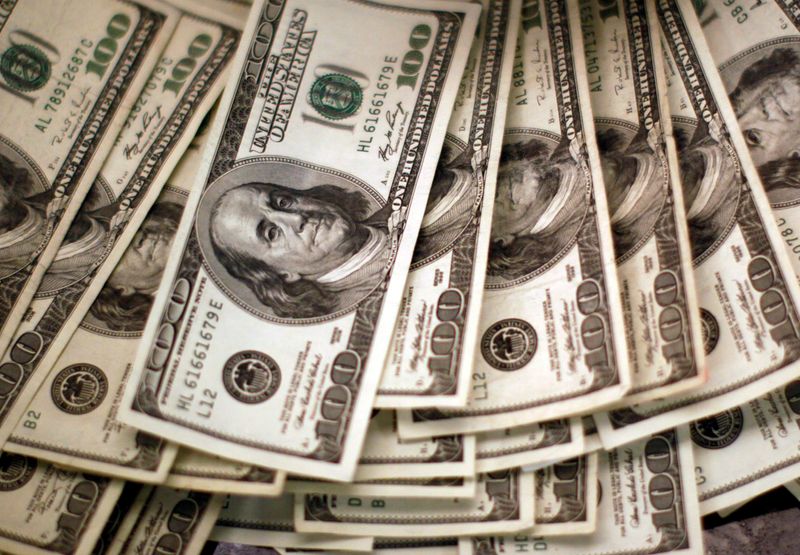
Hari Kishan and Sarupya Ganguly
BANGALORE (Reuters) – A strong U.S. dollar will maintain the status quo in the short term as markets brace for the risk that the Federal Reserve’s first interest rate cut will be delayed until the second half of this year, according to a Reuters poll of currency market strategists.
Defying a weakening trend late last year, the dollar has strengthened against nearly every currencies followed by traders and investors, rising nearly 2.5% for the year.
Much of the dollar’s recent strength is based on stronger-than-expected US economic data and growing calls for the Fed to cut rates quickly. The timing of the latter is likely to have a greater impact on currency movements in the short term.
“I think over the next three months we’re likely to see the dollar hold in the range we’ve seen since the start of the year,” said Sean Osborne, chief currency strategist at Scotiabank.
“If we end up in a situation where instead of a soft landing, it is a no-landing scenario that potentially significantly reduces the scope for the Fed to cut rates over the rest of this year, in which case the dollar is likely to remain relatively strong. “
Despite trader positioning data showing speculators increased their net long bets on the dollar to the highest level since November last year, analysts in a Reuters poll conducted March 1-6 were divided on what positioning would look like over the next three months.
Among the 66 analysts who responded to the follow-up question, a slight majority of 35 expected little change, while 17 forecast a decline in net long positions. Eleven reported an increase in net long positions, and only three reported a reversal to net short positions.
“One thing that’s happened this year is that investors have had a hard time playing the dollar, and they’re looking for trades that… will take the dollar out of it. I think that’s how it’s going to continue to fall,” he said. Dan. Tobon, Head of G10 Currency Strategy at Citi.
“We’ll have a slightly weaker dollar over the next three months, but we won’t get the kind of flows that really create stretch positioning situations.”
While currency strategists still expected the dollar to weaken against most major currencies over the 12-month period, average forecasts showed little change from analyst forecasts based on the February survey.
The euro, which fell about 1.5% for the year, is forecast to rise 3.0% to trade around $1.12 for the year. The single currency last changed hands around $1.09 on Wednesday.
Even the battered Japanese yen, which has lost nearly a third of its value since 2021, was expected to rise more than 9.0% in 12 months to trade at 137.00/dollar.
After failing to make any progress against the USD in 2023, the USD and USD were projected to rise by about 7.3% and 5.0% respectively, offsetting losses in 2024 year and trading higher against the US dollar in the coming months.
The Australian dollar and New Zealand dollar, which last traded at $0.65 and $0.61 respectively on Wednesday, are forecast to rise to $0.70 and $0.64 by the end of February.
(As for other stories from the March Reuters currency survey:)


